Smooth Sailing, Greener Trails, Our Energy Savings Set The Windsails
Wilhelmsen insights
|
Eckard Rogg, Vessel Manager & Anuroop Chopra, Fleet Performance Analyst
This regulatory mandate has prompted shipowners to take concrete steps towards decarbonizing their fleets. In this context, reducing energy consumption has become a top priority, and the urgency to address climate change is greater than ever before.
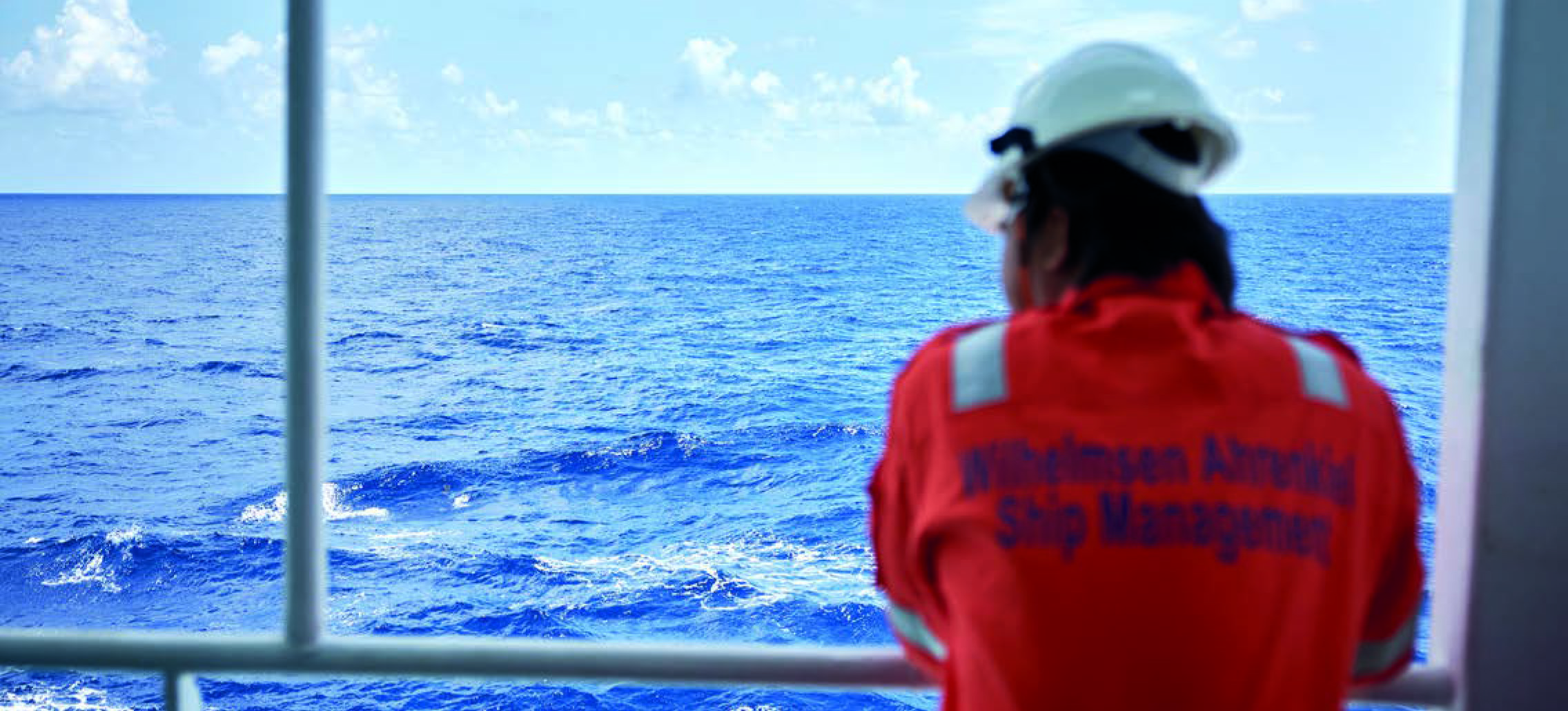
In today’s market, there are many potential energy-efficiency and optimisation measures available, presenting a challenge for shipowners to evaluate the most suitable options. At Wilhelmsen Ahrenkiel Ship Management, we understand this challenge and offer our expertise through our Fleet Performance department. Our team can help evaluate a range of options to identify those that are not only profitable but also technically feasible and safe for our clients. With our technical expertise, shipowners can make informed decisions and optimise their fleets for maximum efficiency.
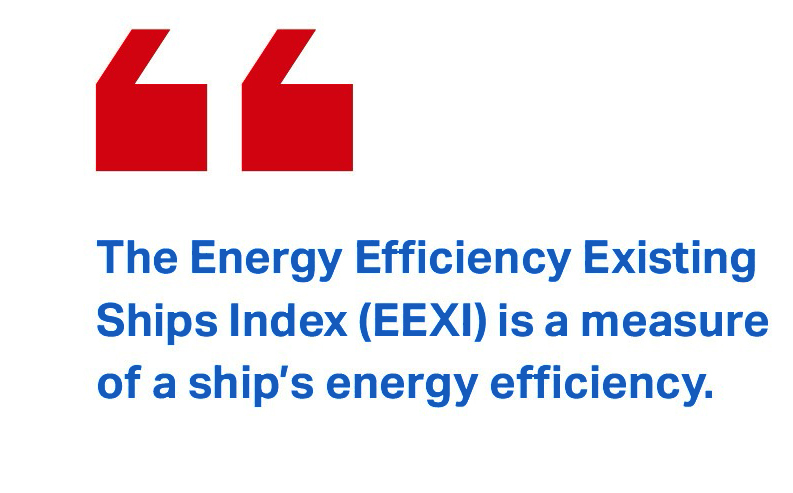 As the saying goes, “you cannot analyse what you cannot measure.” With this principle in mind, our Fleet Performance department has launched a retrofitting project together with different shipowners as clients that aims to renew the main engine, auxiliary engine, and auxiliary boiler flowmeters of around 60 vessels altogether for various shipowners. The state-of-the-art digital flowmeters are equipped with integrated temperature sensors boasting an accuracy range between 0.1% to 1%. Multiple signal outputs enable real-time monitoring of values both in the engine control room (ECR) and on the bridge.
As the saying goes, “you cannot analyse what you cannot measure.” With this principle in mind, our Fleet Performance department has launched a retrofitting project together with different shipowners as clients that aims to renew the main engine, auxiliary engine, and auxiliary boiler flowmeters of around 60 vessels altogether for various shipowners. The state-of-the-art digital flowmeters are equipped with integrated temperature sensors boasting an accuracy range between 0.1% to 1%. Multiple signal outputs enable real-time monitoring of values both in the engine control room (ECR) and on the bridge.
It sets out the minimum energy efficiency requirements for existing ships and is used to determine whether a ship is compliant with the reduction measures. Improving energy efficiency in the shipping industry is crucial for complying with EEXI requirements. There are various measures and technologies available to achieve this goal, including the installation of shaft power monitors combined with shaft power limitation (ShaPoLi). We are currently working on retrofitting around 50 vessels with ShaPoLi, and the combined implementation of a sensor-driven performance monitoring system connected to the shore is another promising project. ShaPoLi is a technology that limits the power output of a ship’s propeller shaft. By limiting the shaft power output to the level required for a given voyage, ShaPoLi can help to improve energy efficiency and reduce emissions.
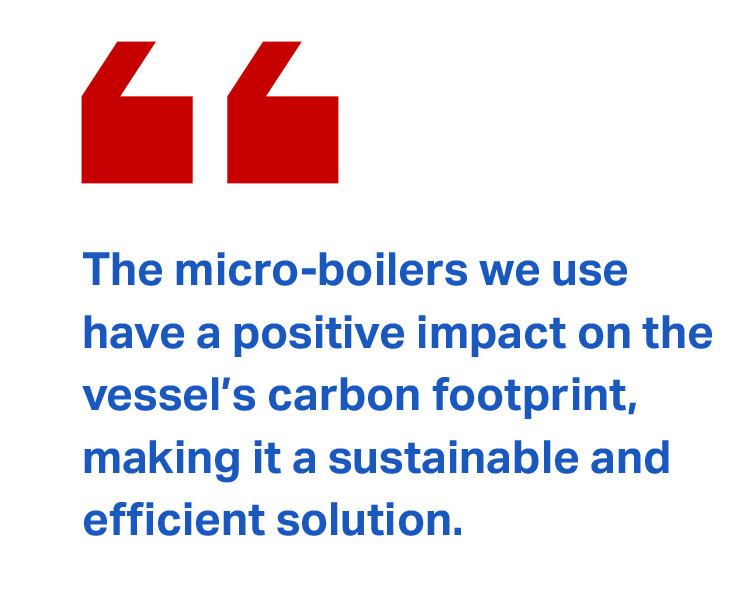 Ensuring energy efficiency is crucial for meeting the Carbon Intensity Indicator (CII) regulation. Compliance with this regulation is required every year and is a critical aspect of responsible maritime operations. To promote fair competition, the International Maritime Organization (IMO) has introduced correction factors that can enhance the CII ratings. One such factor pertains to fuel consumption while transporting reefer containers. Our team understands the significance of this factor and is taking proactive measures to accurately measure the reefer energy consumption. We are installing Rogowski coils – equipment that measures energy consumption by the electrical consumer with precision. The installation of this small but effective equipment will not only help in correctly applying the reefer energy consumption but also assist in power management systems.
Ensuring energy efficiency is crucial for meeting the Carbon Intensity Indicator (CII) regulation. Compliance with this regulation is required every year and is a critical aspect of responsible maritime operations. To promote fair competition, the International Maritime Organization (IMO) has introduced correction factors that can enhance the CII ratings. One such factor pertains to fuel consumption while transporting reefer containers. Our team understands the significance of this factor and is taking proactive measures to accurately measure the reefer energy consumption. We are installing Rogowski coils – equipment that measures energy consumption by the electrical consumer with precision. The installation of this small but effective equipment will not only help in correctly applying the reefer energy consumption but also assist in power management systems.
At our company, we recognise the untapped potential of energy from flue gases on board ships. Recently, we have been working with a prominent client in the maritime industry to evaluate the feasibility of utilising waste heat energy from auxiliary engines. By using the fuel gases from the auxiliary engines to generate steam that would otherwise be lost, this measure can significantly reduce the use of oil-fi red boilers during port stays, anchorages, and drifting conditions. In addition to its fuel-saving potential, this measure offers a fast return on investment.
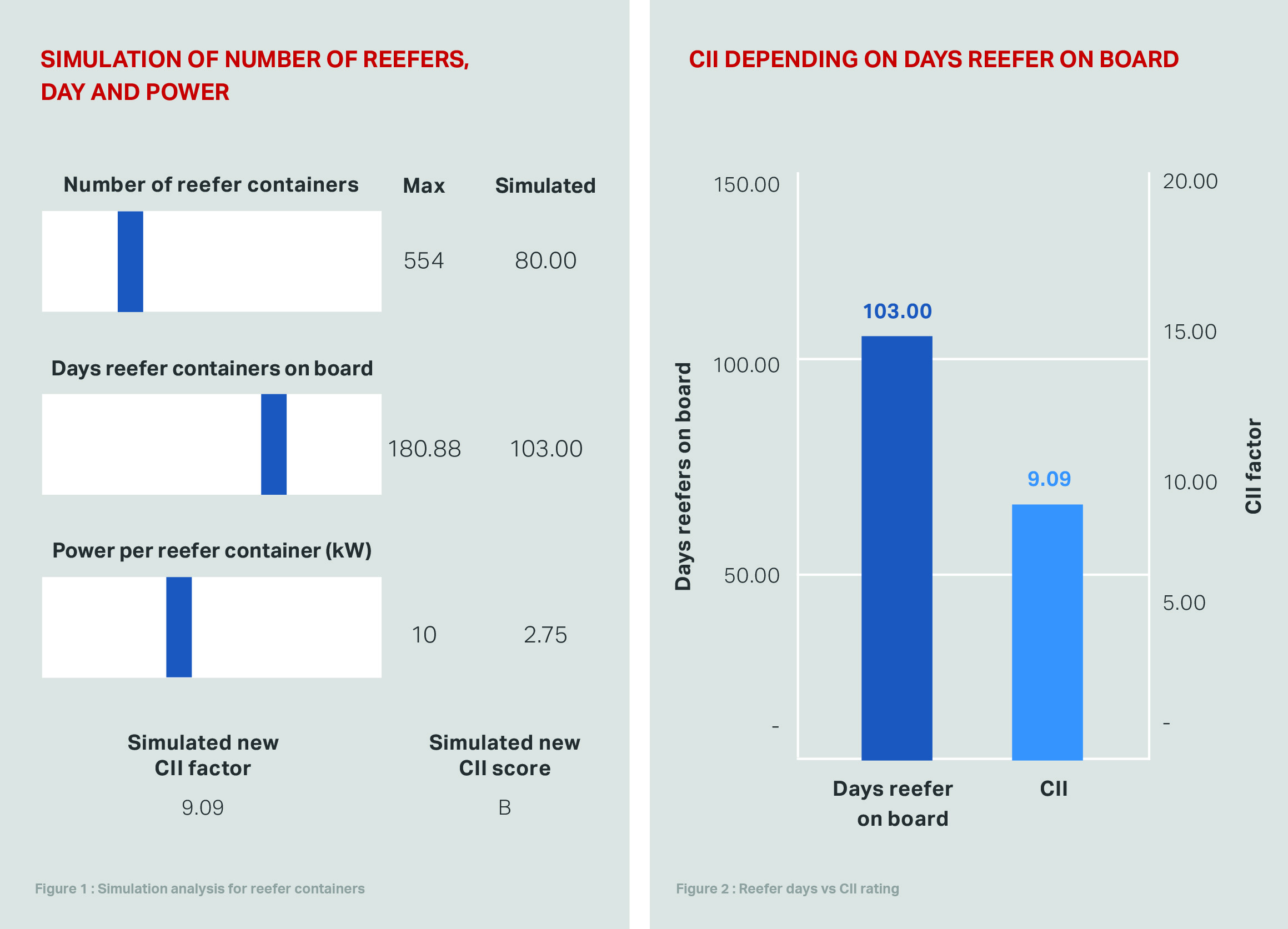
The figure below explains the fuel consumed by the auxiliary boiler from a sample vessel in our fleet. The analysis was carried out over a span of 3 months. This results in the savings in the range of 20–30 % of fuel consumed during port stays from the auxiliary boiler.
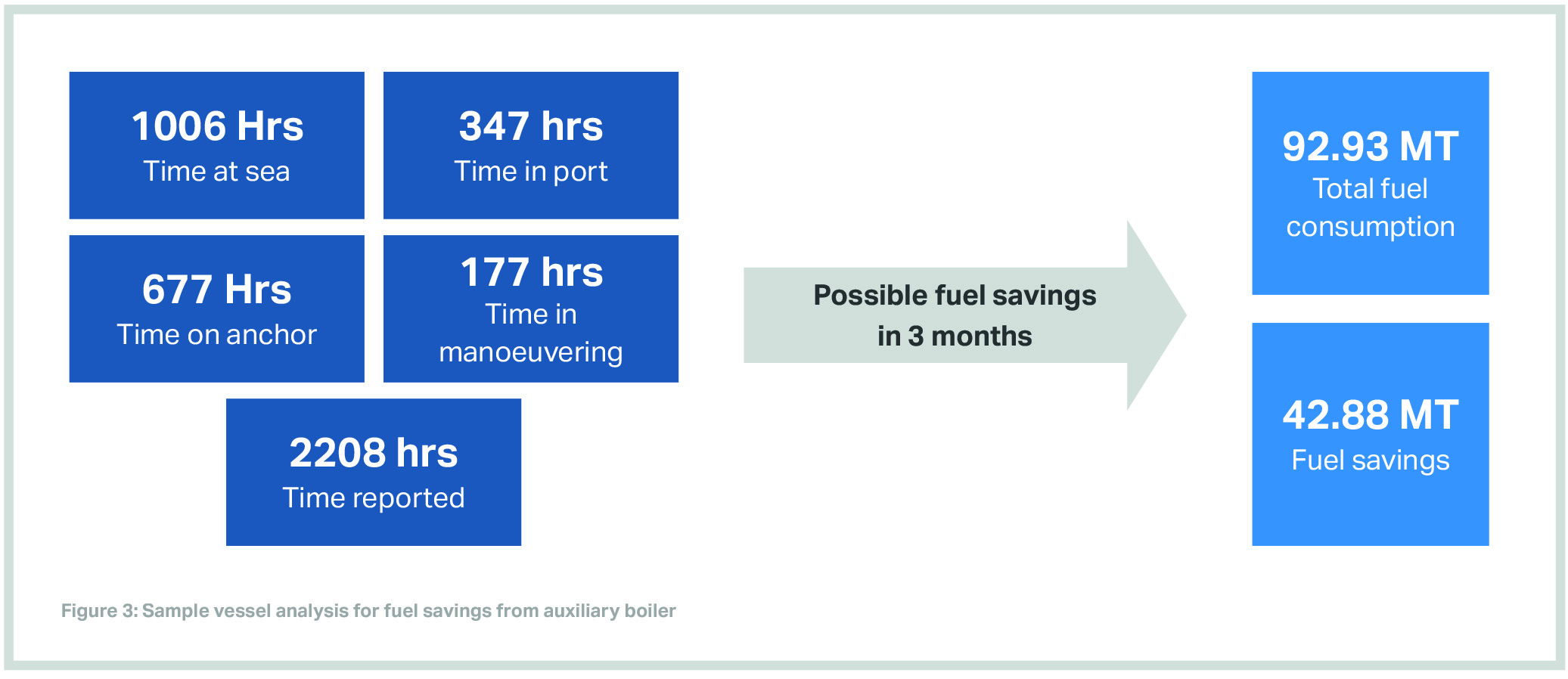
We realise the importance of energy efficiency and reducing operational costs. In line with this, we have tasked our performance department with conducting a feasibility study on the potential benefits of implementing variable frequency drives (VFDs) for our major energy-consuming motors. By regulating the speed of the motors in response to load demands, VFDs have the potential to significantly reduce our energy consumption and associated costs. Based on preliminary studies, we anticipate a fuel savings of around 4–5%, as well as reduced maintenance needs. We are committed to adopting sustainable and cost-effective solutions across all aspects of our operations, and the implementation of VFDs is just one example of our ongoing efforts to minimise our environmental footprint and optimise our performance. We look forward to sharing the results of the feasibility study with our stakeholders and exploring potential opportunities for further energy savings and efficiencies.
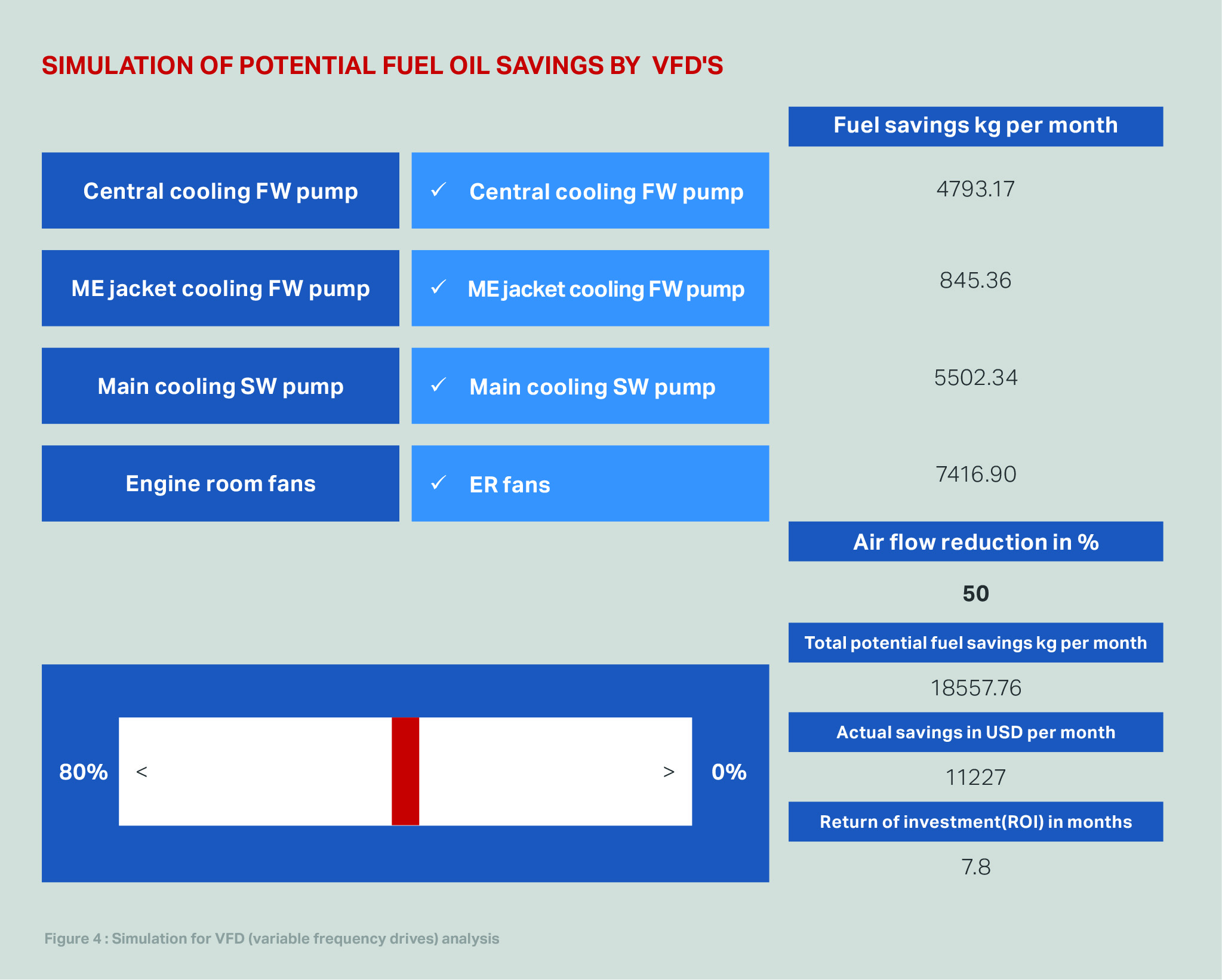
Slow steaming is a technique used widely by shipowners and charterers where vessels reduce their speed to consume less fuel, resulting in reduced emissions and cost savings. To further analyse the potential and optimise the low load operations. According to our vessel manager Mr. Eckard Rogg, the system is advanced technology employed in mechanically controlled two-stroke engines. Its primary function is to maintain the optimal cylinder pressure for improved engine performance and fuel effi ciency. This is achieved through precise control of the fuel injection timing using an electronic actuator mounted on the VIT (variable injection timing) rack. With this system in place, the engine operates more efficiently, reducing emissions and extending its lifespan.
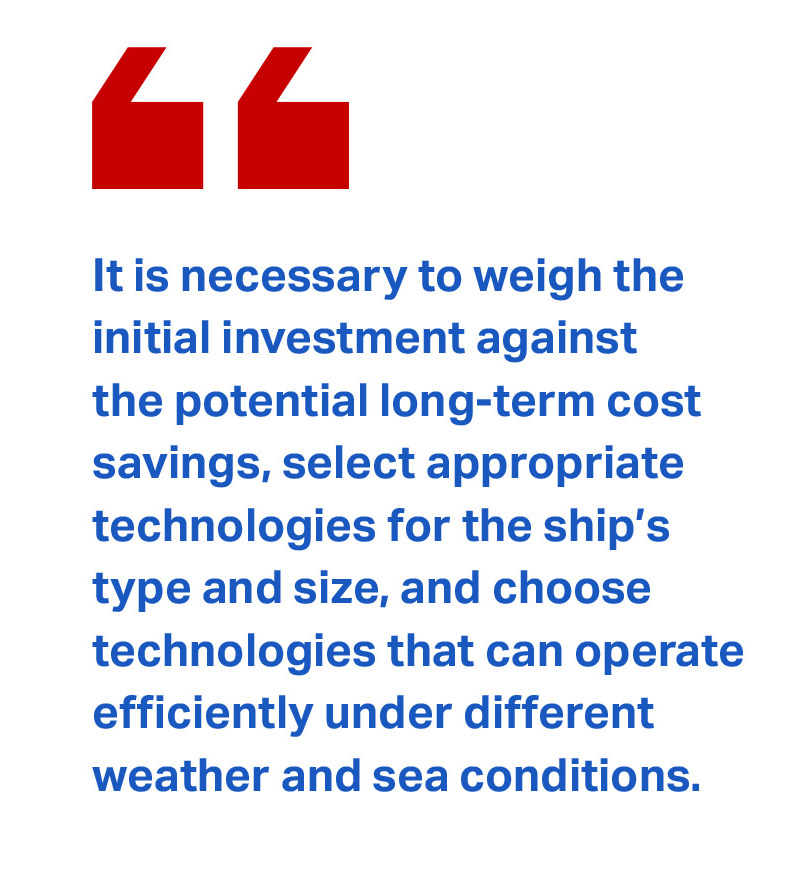 Overall, as seen from various projects and our experience with energy efficient technologies, compliance with energy regulation is the need of the hour. And there is a lot of potential in energy saving measures. But there are lot of factors to be taken into account in selecting the right choice of measure. These include the cost of implementation, the ship’s type and size, the operating conditions, kind of environmental regulations, and retrofitting feasibility.
Overall, as seen from various projects and our experience with energy efficient technologies, compliance with energy regulation is the need of the hour. And there is a lot of potential in energy saving measures. But there are lot of factors to be taken into account in selecting the right choice of measure. These include the cost of implementation, the ship’s type and size, the operating conditions, kind of environmental regulations, and retrofitting feasibility.
This write-up has been excerpted from the magazine "Telegraph" by Wilhelmsen Anrenkiel Ship Management.
Read more stories from the Wilhelmsen Ahrenkiel Ship Management magazine, Telegraph via this link: https://www.wilhelmsen-ahrenkiel.com/